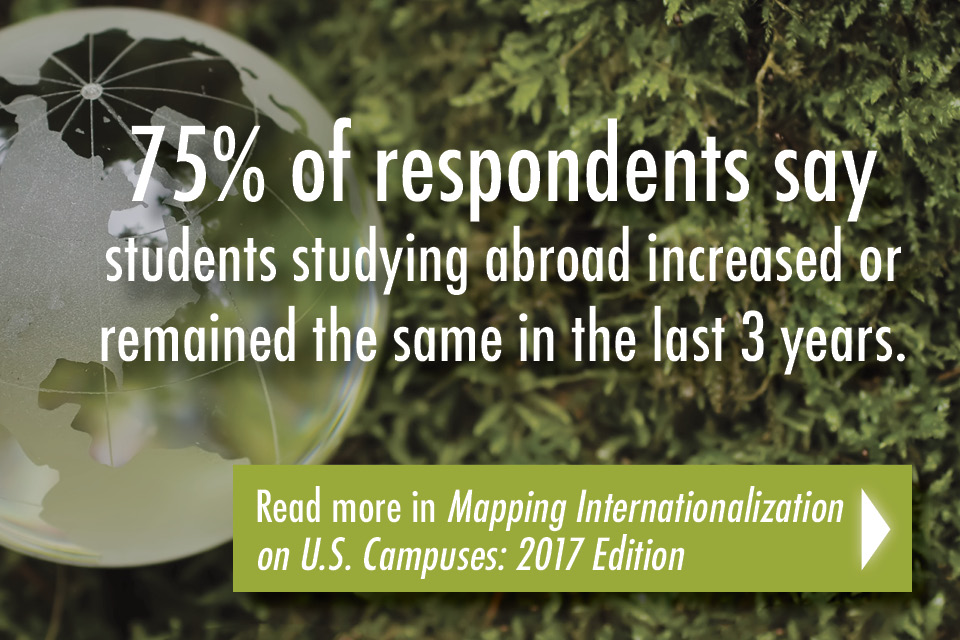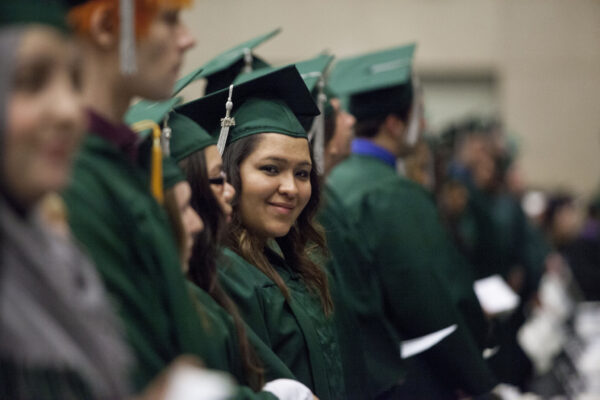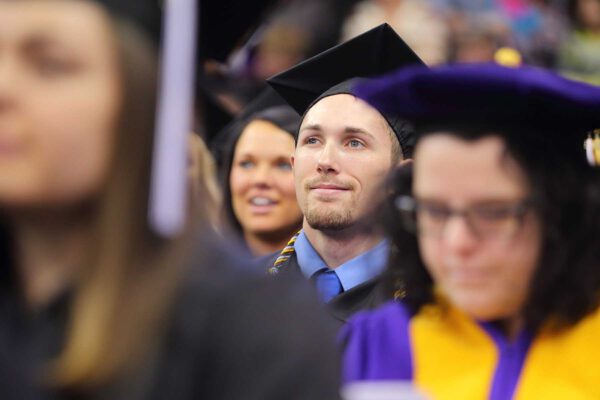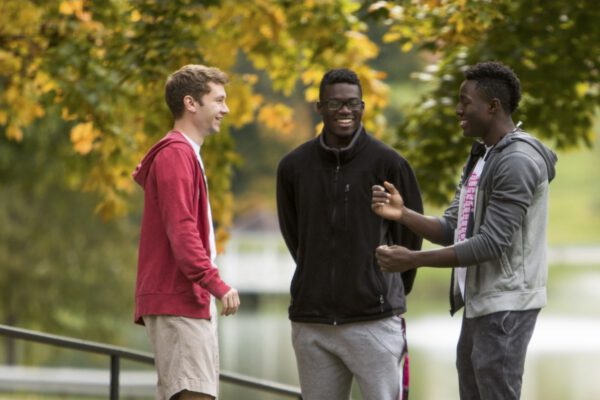Mapping Snapshot: Education Abroad and the Outbound Mobility of U.S. College Students
This post is the fourth in a series of snapshots from ACE’s report, Mapping Internationalization on U.S. Campuses: 2017 Edition.

What is the number one priority among activities for internationalization for campuses? According Mapping Internationalization on U.S. Campuses: 2017 Edition, it’s education abroad. However, only 20 percent of responding institutions have established a target figure for education abroad, while over 80 percent of institutions with an international student recruiting plan have a target figure for international student enrollment.
Among the responding institutions, almost 75 percent reported that the number of students studying abroad increased or remained the same over the last three years. Moreover, institutions often use both internal and external entities to develop and deliver their education abroad programs, and between 25 and 33 percent of the respondents engaged with third-party program providers to manage them.
Over half of the responding institutions provide institutional funding opportunities for education abroad, and, among all types of institutions, special-focus institutions have doubled institutional funds for study abroad between 2011 and 2016.
If you are interested in the full report, please visit here.
If you have any questions or comments about this blog post, please contact us.


